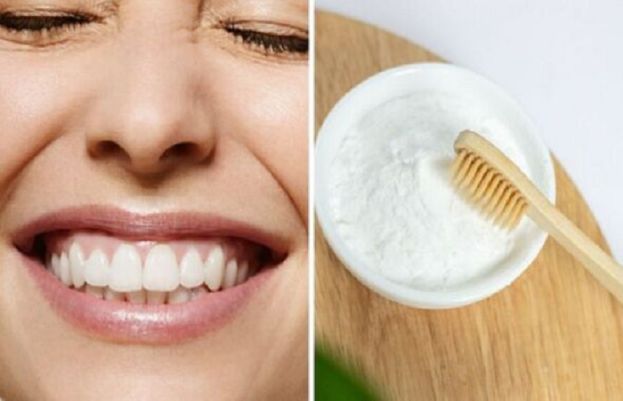
Professional bleaching and whitening kits can be expensive, messy and time-consuming to use. In comparison, baking soda — something most people already have in their kitchens — seems like an attractive whitening alternative. But how much difference can this common household product actually make?
To get at that answer, let’s first take a closer look at the makeup of baking soda, which is really just the common name for sodium bicarbonate. It’s produced by bubbling carbon dioxide through a solution of sodium carbonate. This forms crystalline mineral salts — basically, baking soda crystals — that are then filtered out of the solution, dried and milled to various particle sizes, depending on how it will be used.
Chemically speaking, baking soda is a weak base that is amphoteric, which essentially means it can react with both acids and bases. This quality makes it perfect for neutralizing acids produced by bacteria in plaque, which could potentially destroy tooth enamel if left unchecked.
The chemical structure of baking soda also makes it a mild abrasive, and that’s why it’s so effective for removing surface stains from your teeth. Of course, other polishing agents that are sometimes used in oral care products, such as hydrated silica or dicalcium phosphate, can also help scrub away teeth stains. But baking soda crystals are unique in that they dissolve easily in water, which allows the baking soda to penetrate more deeply into the grooves of your teeth and hard-to-reach places in your mouth than some other abrasives can.
Additionally, baking soda crystals are softer than enamel and dentine (a tooth’s outer layers) and therefore can mechanically scrub off stains without scratching those parts of your smile. This has the effect of making your teeth look brighter. But does it actually make them whiter? Read on to the next page to find out.
Baking Soda Benefits
It’s important to note that while baking soda works to brighten and prevent discoloration of your teeth, it won’t necessarily make your teeth a brilliant shade of white. You’ll probably need a whitening product that contains bleach for that. Still, baking soda offers many other potential benefits that could make it a good addition to your oral care routine — if you use it correctly.
For example, it’s possible to use baking soda all by itself (meaning sans toothpaste) as a cleanser for your teeth. Just make a quick paste by mixing baking soda and water and then dip your toothbrush into it. To enhance its whitening capabilities, you can even add a few drops of hydrogen peroxide.
However, the American Dental Association (ADA) recommends that you don’t rely on baking soda alone for keeping your teeth healthy, because baking soda is simply an abrasive agent that helps remove debris and surface stains on your teeth. It doesn’t necessarily fight plaque, a substance that causes gum disease and tooth decay.
Fluoride is the ingredient found in toothpastes that fights plaque and strengthens enamel, so it’s essential that you have it in your oral care routine, too. You could think, for example, that a particular dark spot on your tooth is just a stain that you can scrub away with baking soda, but it could potentially be a cavity. If that’s the case, no amount of baking soda will solve the problem.
Baking soda as an ingredient in a fluoridated toothpaste can also help whiten your teeth by removing surface stains. The ADA does extensive testing on toothpastes to determine their safety, effectiveness and abrasive qualities. It has given its seal of approval to several types of toothpaste that contain baking soda.
As a bonus, baking soda has been found to neutralize bacterial acids and other components that cause bad breath. It could help keep your mouth fresh for up to three hours after you brush. Not too shabby for something you found just lying around your kitchen.











